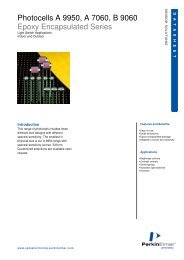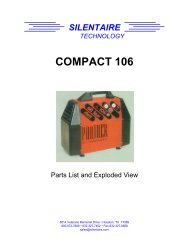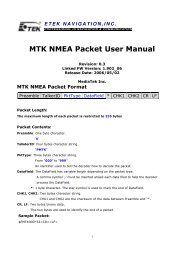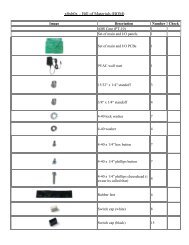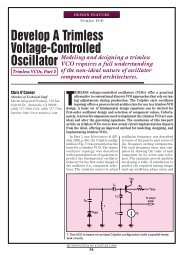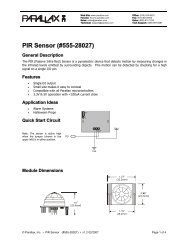Microstrip Patch Antennas for Broadband Indoor Wireless Systems ...
Microstrip Patch Antennas for Broadband Indoor Wireless Systems ...
Microstrip Patch Antennas for Broadband Indoor Wireless Systems ...
You also want an ePaper? Increase the reach of your titles
YUMPU automatically turns print PDFs into web optimized ePapers that Google loves.
extra copper from the substrate, the machine removed a significant amount of substrate<br />
resulting in reduced height and ripples along the substrate plane. Due to this effect, our<br />
measurements reflected incorrect results. It was found theε r of 4.43 (2.4 GHz) using the<br />
adhesive copper tape, to be adequate where projects from previous results show an<br />
average ε r value of 4.5.<br />
5.2 COPPER TAPE<br />
It was decided to investigate the use of adhesive copper tape to manufacture<br />
patches autonomously after a suggestion from Dr. Michael Neve; this meant the project<br />
was no longer bound by the manufacturing turn around delay period. A 3M product that<br />
fit project requirements was found and ef<strong>for</strong>ts were made to acquire a roll of adhesive<br />
copper tapes. Reputedly the copper tapes have been used to manufacture antennas that<br />
resonate up to 5GHz. The patches made from the copper tape, can be placed on single<br />
copper sided sheets of substrate and allow the user to create their own microstrip patch<br />
antennas without the use of any industrial machines or etching process. As a result the<br />
manufacture time can be reduced down to a few, which meant manufacture of boards was<br />
no longer PCB milling machine reliant. The copper tape allowed us to cut the copper tape<br />
to fit calculated dimensions and create desired microstrip patches. One side of the tape<br />
was adhesive; so it was possible to fix them on the substrates and in some cases overlap<br />
them. But some concerns were raised about the conductivity of the glue. An experiment<br />
was devised, to measure the transmission loss <strong>for</strong> a thin unbroken strip of copper tape.<br />
The test was repeated <strong>for</strong> a copper tape strip of identical dimensions with a missing<br />
section that was being covered by an overlapped copper tape joining the ends. The tests<br />
show (fig 8) the difference between copper strip and overlapped copper tape is minimal<br />
and can be ignored.<br />
Fig 8: Conductivity of copper tape<br />
9




